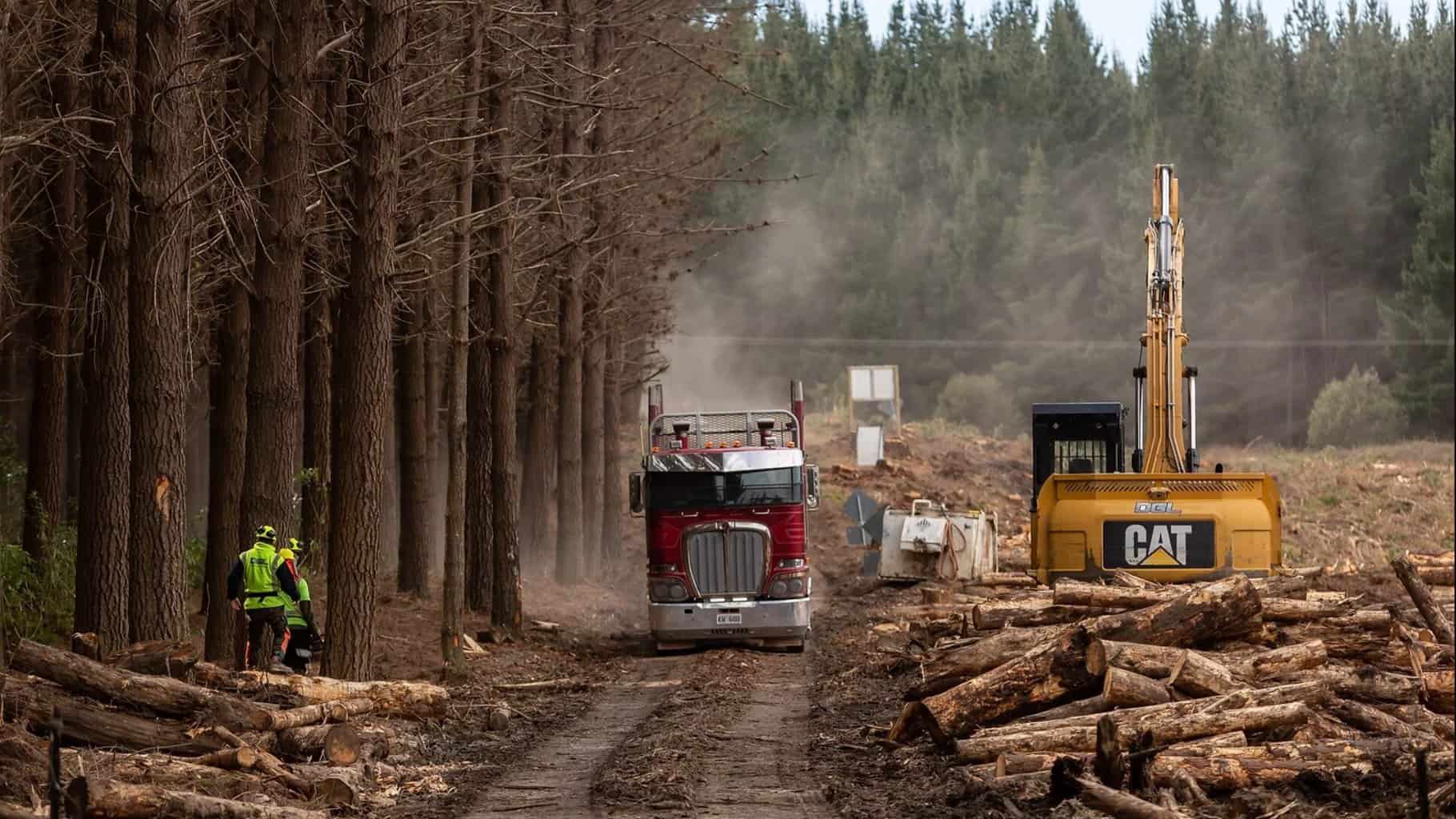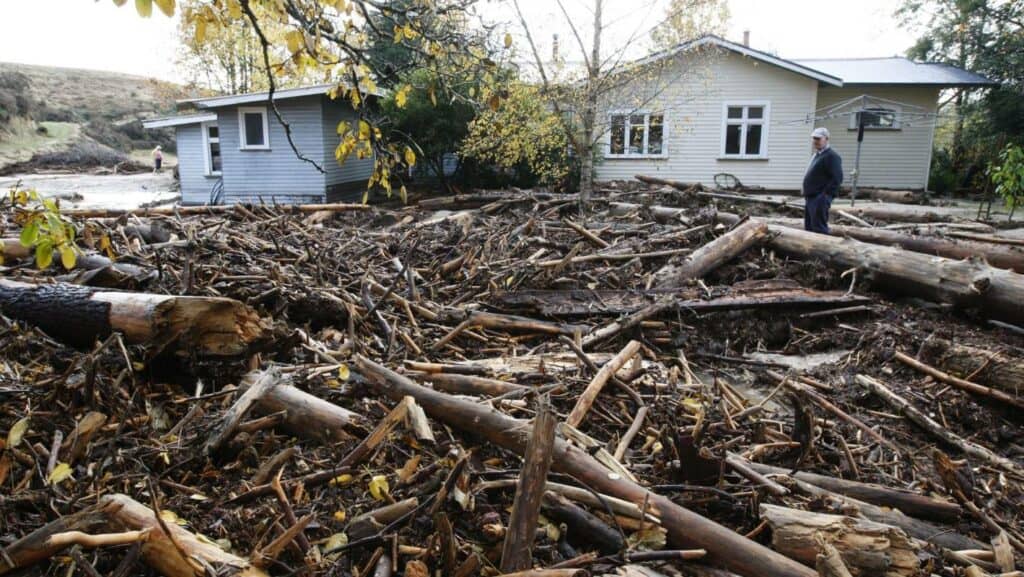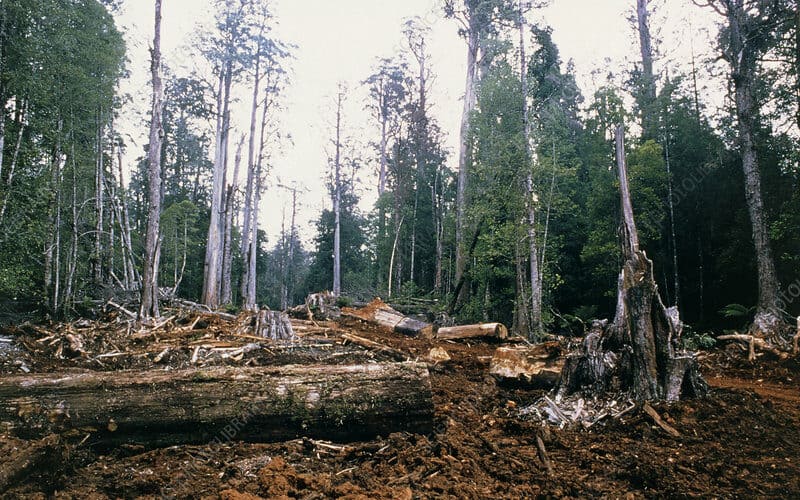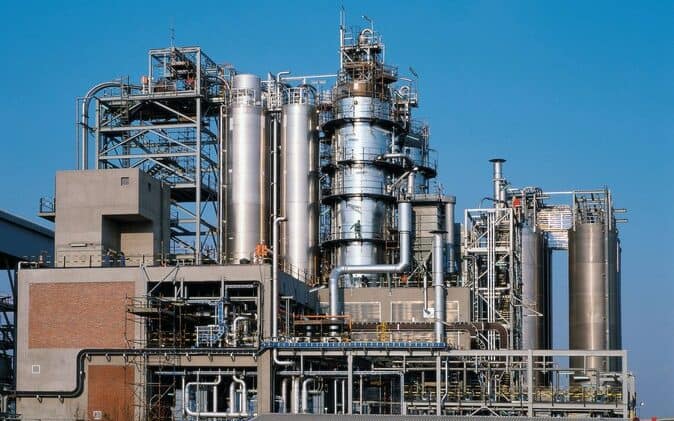By Paul Callister, David Keat, Robert McLachlan and Jake Roos, 30 August 2022
The proposed NZ Biofuels Obligation will mean fuel suppliers must blend a percentage of biofuel with petrol and diesel from 1 April 2023 or face steep fines. The government wants this biofuel to be sustainably produced in New Zealand, but their own advisors have told them such fuels are only available in very small quantities, and all the biofuel to meet the obligation will need to be imported. Some bodies, such as the Crown Research Institute Scion, have said that wood and waste wood grown in New Zealand could be made into biofuel that could be used to meet the obligation. But how realistic is this in the short to medium term? Again, the government’s own advisors have said: not at all. In this blog we examine why.
About Wood
Wood is a very versatile material. It’s used in all kinds of construction, for paper products and as a carbon store in forests. Before coal, gas and other fossil fuels took over, wood was humans’ main fuel source. In fact, the change over to these fuels saved vast areas of forests from being cut down, at least for a while.
Wood differs from the food crops used to make ‘first generation’ biofuels in that it contains cellulose and lignin. These are organic compounds that enable trees and many other plants to stand up tall and strong. These compounds are very hard to break down, which is why humans and most animals can’t eat them, and why well-maintained wooden structures can last for many hundreds of years.
As we urgently need to move away from fossil fuels, wood is being investigated as an alternative. At first sight, making ‘second generation’ liquid fuels from wood waste appears to have potential, given the amount of this waste we have in New Zealand. Wood waste is a residue from forestry and has the significant advantage that producing it generally does not compete for land with food crops. But producing large volumes of biofuels from trees in a cost effective and carbon positive way is extremely challenging.
Wood-as-Fuel Carbon Balances
We need to note first of all that there are science-based concerns about increasing the use of wood for energy, as it may lead to both clearance of native forests and the oxidation of residual forest carbon (e.g. stumps and branches usually left on the land) which otherwise would have occurred very slowly. The reabsorption of carbon by growing forests takes decades, so burning extra wood now would lead to increases in carbon dioxide concentrations in the atmosphere, resulting in more global heating in the meantime. Clearly there is competition between using wood to store carbon and using wood for energy.
For the evaluation that follows we will assume that the wood waste used for energy is ‘carbon neutral’, excluding its collection, processing and transport, thanks to careful management of forest carbon stocks and expansion of forestry onto bare marginal land. However, we note that this is a critical and challengeable assumption to the case for wood-as-fuel.
Burning Solid Wood
Wood can be converted into energy in several ways. It can be burnt in domestic or industrial wood burners either directly or via processed pellets, which are usually made from sawdust. Charcoal can be an option in some cases. Wood can in boilers to heat water and produce steam. The steam can then power machines, as process heat for industry, to generate electricity via turbines or to heat buildings. Burning solid wood is the most straightforward way to use wood for energy, as it does not need complicated and costly processing, although handling the bulky fuel does pose practical challenges. Furthermore forestry waste has a high mineral content, which can be damaging to combustion equipment. Despite this, NZ milk processor Fonterra is already converting some of its milk powder plants to wood heating.
Except for some niche uses, such as wood-fired steam engines, solid wood fuels are generally not practical for transport applications.
Wood to Gas
Wood can also be converted to gas. The gasification process uses high heat (700-1200 °C) in a low oxygen environment. It generally produces syngas – a mixture of carbon monoxide, hydrogen and CO2 together with a range of by-products which need to be removed before the gas can be used.
Wood to Liquid Fuels
In theory the syngas can be processed using the Fischer-Tropsch (FT) reactions followed by further processing steps to produce a range of drop-in petrol, jet and diesel biofuels. However that route requires additional hydrogen to be added as well as a huge quantity of very expensive equipment. The International Energy Agency (IEA) lists no such plants operating with wood. Even in the oil industry, who have access to cheap natural gas to feed the process, these plants are rare.
The syngas from gasification can be converted by bacteria to ethanol. However there are no plants under construction or operating using this process.
Another route involves heating wood to around 500 °C in the absence of oxygen – a process called pyrolysis. It produces a complex tar-like liquid called bio-oil and a small amount of methane gas. The bio-oil can be burnt directly as a heating fuel in boilers or can be further refined in conventional oil refineries to diesel, aviation fuel and other products.
Finally there is a process called hydro-thermal liquefaction (HTL) which uses heat and extreme pressure to break down wood or any organic material in the presence of water to make bio-oil. It does not need the feedstock to be dry, as pyrolysis does.
None of these are new technologies – Fischer Tropsch dates from 1925. Pyrolysis was first used in ancient times. HTL was first developed in the 1970s.
Scion’s Vision for Wood to Liquid Fuels
In 2018, NZ research institute Scion produced a biofuel roadmap study based around wood as a feedstock. The authors argued the fuel would be particularly helpful in decarbonising the heavy transport, shipping, and aviation industries.
The Scion report was upbeat about the potential of biofuels from wood. Scion suggested a “biofuelled future” would:
- Reduce our greenhouse gas (GHG) emissions
- Help us meet our international GHG reduction commitments
- Rejuvenate regional economic and employment growth
- Make New Zealand less dependent on oil imports
- Maintain access to international markets for our goods and services.
New Zealand has a large forestry industry based around fast growing pinus radiata. Forests are mainly grown on marginal land unsuited for cropping. But some forestry competes with livestock farmland. Whole trees can be used as a biofuel feedstock, but at current and projected carbon prices that would have many undesirable outcomes. A more attractive option is to use wood waste, mostly from forestry, created when trees are harvested. Scion estimated that the energy content of wood waste from construction and forestry was equal to 5.3% of liquid fuel demand in 2015.
Scion promoted the idea of forestry based biofuel production as a way to create strong regional economic development and employment growth. The main forestry areas include Northland, East Coast and the central North Island. Biofuel conversion plants would need to be located close to these because of the high financial and carbon costs for transporting the bulky wood waste.
Scion suggested government policy support, i.e. subsidies, would be required in the short to medium term to enable large-scale biofuel production to be established. They noted that market forces alone would not be enough to start large-scale production. At the time of the report, fossil fuel and carbon prices were too low and the technical risks still high for the private sector to invest.
Government Investigation of the Business Case for Wood to Liquid Fuels
There have been two further reports on the potential of wood for energy production in New Zealand. The first was the Wood Fibre Futures Stage One report.
The report covered a range of uses of wood and recommendation included replacing coking coal in steelmaking and increasing the use of high-tech wood products in the built environment,
Other fuel uses were suggested in the near future. The report suggests that in the medium term (5-10 years) there are technologies which will allow forestry to substitute imported fossil fuels by producing bio oil. It recommended producing liquid biofuels for use in heavy transport (truck & rail), aeroplanes and ships, but not cars. It also recommended widening biomass sources to include municipal waste together with forestry, to make any investment case more robust.
However the report warned that currently the investment environment did not favour New Zealand because wood waste from forestry in New Zealand is expensive (around 20% more than key competitor countries) due to difficult terrain and transportation. The report also suggested that global competition for opportunities which attract the specialist, large-scale, international investors in this arena is high. Local investors, both financial and strategic, are limited in number and in scale and some of these are focused on the status quo including log exports.
In 2022, the Te Uru Rākau NZ Wood Fibre Futures Project Stage Two report was published. Their financial calculations show the huge capital investments needed and in most cases, poor returns, as shown in Table 3-1 from the report below.
The economics of the more complex pathways are deeply unattractive. However the report’s authors suggested the simpler ones have merit and proposed establishing a range of processing plants producing pellets, sawn timber, and bio oil from fast pyrolysis. They calculated avoided carbon emissions could reach some 1.6 million CO2-equivalent per year by 2030, increasing to approximately 2.5 million CO2 equivalent per year by 2040 in this scenario. This would involve the establishment of three medium- and one large-scale pellet mills, two medium- and two large-scale bio oil plants, and two large scale sawmills and associated liquid bio oil plants between 2024 and 2040.
The report also warns that all project investments face risks from immature technology and likely cost increases. These are:
- fibre supply, security, and cost
- not having a stable customer base
- over-reliance on the domestic market.
These risks are lower in mature industries and markets such as wood pellet production and sawmilling, but significantly higher for investment in bio-oil and liquid biofuels. The risk is greater with greater scale, for example as securing enough raw material for a large-scale sawmill or gasification Fischer Tropsch plant is more challenging.
If bio oil was produced, with the closing of NZ’s only refinery at Marsden Point this year, the bio oil would need to be exported for refining, then the refined products imported, adding to costs, risks and carbon emissions. Alternatively, the bio oil could be used as a heating fuel, but the domestic market for this would need to be developed and this would not solve any problems for the transport sector. It would also compete with wood pellets, a more viable pathway.
Regardless of the business case, commercialising a new technology (taking it from a demonstration scale to a higher-volume production scale) takes time, at an absolute minimum three years, usually much longer. As government officials told cabinet, the earliest any domestic liquid biofuel from wood or wood waste could be produced would be 3-5 years from now, and cost 2-4 times as much as conventional biofuels, and until such production could be scaled up, New Zealand fuel suppliers will need to import all the biofuel required to meet the planned obligation.
Current Status of International Wood To Liquid Fuel Plants
But could they import second generation sustainably produced wood based biofuel from overseas? In 2020, the IEA provided a list of just five wood-to-liquid fuel plants currently in operation with a further two in construction and three in development worldwide. None produce transport fuels. They all produce bio-oil which is either burnt for heating, or in one case is sent to a nearby oil refinery. The plants are extremely small – the total capacity is 147 million litres per year equivalent to about 2% of the now-closed Marsden Point refinery’s capacity.
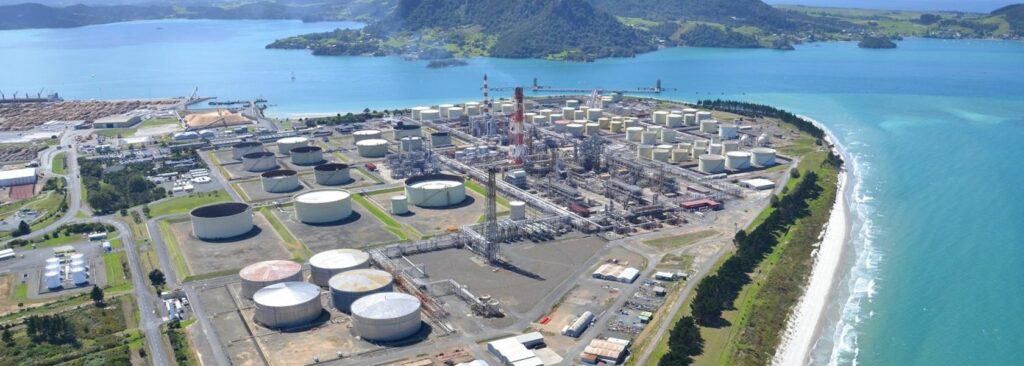
A further six small demonstration plants (an early stage of technical/commercial development) are operating with a total capacity of 40.5 million litres per year. Their feedstocks range from woody biomass, sewage and in one case plastics for recycling. They all produce bio-oil, except for the Shell research center plant which produces 0.5 million litres per year of transport fuels from a mini refinery complex.
The volumes currently available are a tiny fraction of the mandate requirement, even for a small country like New Zealand.
Finally, if wood conversion to transport fuel was easy and commercially viable, given the large incentive in the EU and North America, an industry would already have been established. For example, the US Renewable Fuel Standard (RFS) required a percentage of biofuel used to meet the required volumes to originate from cellulose – e.g. corn husks, stalks and silks which are waste material left over from ethanol production. The US Government Audit Office examined the RFS over the period 2010 to 2019 and found that this requirement was not met on the grounds of being ‘uneconomic’ and was waived by the Environmental Protection Agency, letting the fuel suppliers off the hook.
Summary
Biofuels mandates in the USA and in the EU over several decades have not succeeded in spurring the production of second generation wood or cellulose-based liquid biofuel. After looking at the considerable technical and financial challenges involved, it’s easy to see why. Instead they have created powerful, mandate-dependent and environmentally destructive industries based on food crops, who then lobby politicians hard to keep the mandates in place.
There is no reason to believe the proposed New Zealand Biofuels Obligation will be any different – For both the immediate and foreseeable future, the volumes of fuel mandated under draft legislation will need to come from first generation, food-based imported sources, causing ruinous environmental and social effects, as we have outlined in other articles. Because of this we oppose the introduction of the biofuels obligation next year.
However, we support further research on second generation biofuels, especially for aviation, as they may be able to make a useful contribution to reducing emissions at some point in the future. If the NZ government wants to support that, then the correct approach is a direct subsidy for the research and development required, not the mandate currently proposed.
Lastly, there are already many ways we can use to decarbonise transport now. We should place most of our focus on what we already know works as it is imperative to reduce emissions in the short term if we are to limit global heating to 1.5℃. These solutions are well known: using electricity directly to power cars, trucks and trains, increasing the percentage of renewable electricity generation, reducing the demand for travel, reducing freight volumes, moving more goods by rail and coastal shipping and getting more people using public and active transport.
About Don’t Burn Our Future
We are a group of concerned New Zealanders pushing for the NZ government to drop the proposed biofuels obligation before it’s too late. We will be doing our best to get this issue front and centre with politicians and the New Zealand public.. You can read more about us and our campaign here. Our campaign is hosted by Low Carbon Kāpiti Inc, a community group advocating for real climate action.
